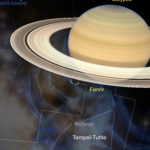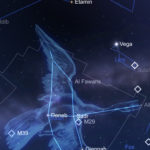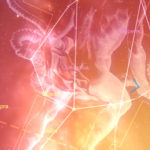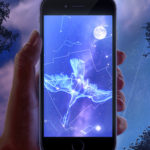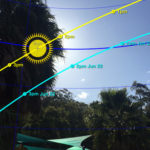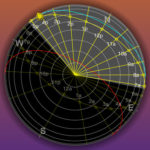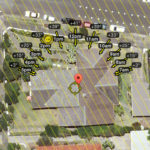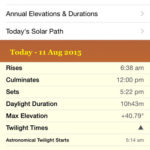Example of Augmented Reality in Education
California State University, Chico teaches Augmented Reality Pedagogy
Augmented reality is a digital tool that some say is the next big thing in teaching and learning. Just ask the School of Education faculty at California State University, Chico. Put simply, augmented reality merges virtual reality with actual reality by using computer-generated imagery through sound, video, and graphics to superimpose three-dimensional virtual objects over either a 3D real environment or a 2D surface which can then be viewed through a variety of devices from tablets and smartphones, to headsets and eyeglasses.
And having already become a hot trend in weather reporting and visual advertising, augmented reality is now moving rapidly into the world of higher education, where schools like California State University, Chico are putting it to innovative use in a variety of academic disciplines.
One professor in the school of education there, Cris Guenter, is a big believer in the power of augmented reality for educating K through 12 students, which is why she uses Aurasma, a popular augmented reality platform, in her online course for pre-service teachers to school them in one of the coolest learning technologies around.
This free digital tool works on mobile devices, such as tablets and smartphones, allowing teachers to select anything in the environment – a logo, a picture, a sign or an object – and turn it into what we call a trigger that can then be overlaid with additional 3D content.
For example, an elementary teacher might create a silhouette of each student in her third grade class and use it as a trigger. The students then fill in copies of the silhouettes with a self-portrait while the teacher helps them develop a 15 to 20 second video about themselves.
As a final step, students produce yet another drawing that depicts what they perceive is going on inside their heads. The teacher then uses the Aurasma application to upload the silhouette trigger along with a student-produced portrait, video and second drawing.
And here’s what happens when parents hold their smartphone or tablet over the trigger:
“So they had to do bring it into Photoshop and do something then she gave markers she wanted them to color right on the photo. Photoshop.”
“Oh my goodness. Oh so we can actually have multiple layers?”
“Yes, absolutely, of course”
This is only one of many ways that augmented reality is bringing new dimensions to teaching and learning. Thanks to pioneering education professors like Cris Guenter at California State University, Chico, students of all ages and abilities are reaping the many benefits of augmented reality using it to explore any number of fascinating topics from the human body to advanced engineering concepts.
And as educators continue to find evermore inventive ways to use this groundbreaking technology as a teaching and learning tool, augmented reality will undoubtedly play an increasingly significant role in furthering the future of connected learning.
According to Cris Guenter, there are over 500 virtual worlds. Kids as young as pre-school are already in them: Minecraft, ABC Mouse, Club Penguin and more. Augmented reality, she says, is the next big thing.
Augmented Reality in Teacher Training
![]() Guenter is a Professor in the School of Education working with undergraduate, certificate and graduate students. In California, teacher credential programs occur after the undergraduate degree is earned. As part of her course which includes online instruction for pre-service teachers, students are introduced to educational technology tools they will use for teaching. Familiarizing students with augmented reality, virtual worlds, and places to find content resources repositories like MERLOT II are major components of the learning program. Using the free tablet and mobile tool, Aurasma, Guenter trains teachers in how to develop an online lesson plan built in augmented reality.
Guenter is a Professor in the School of Education working with undergraduate, certificate and graduate students. In California, teacher credential programs occur after the undergraduate degree is earned. As part of her course which includes online instruction for pre-service teachers, students are introduced to educational technology tools they will use for teaching. Familiarizing students with augmented reality, virtual worlds, and places to find content resources repositories like MERLOT II are major components of the learning program. Using the free tablet and mobile tool, Aurasma, Guenter trains teachers in how to develop an online lesson plan built in augmented reality.
Placing a virtual layer on top of reality creates an augmentation of reality, known more commonly as augmented reality or AR. An example is the use of AR in sports broadcasting on television. In American football, there’s not really a yellow line that goes across the field showing the first down marker, but with AR you can easily see where it is. Using augmented reality enhances your viewing by making it more understandable and adding information that helps you learn the game.
Every place, object, image, video or piece of content can have its own “Aura”, as Aurasma likes to term an augmented reality experience. Using their app, a person can select something, such as a logo, picture, sign or object to become a base or trigger. While in the app, when someone uses their device to hold over the object or photo, it will trigger more content to pop up in a 3D style format.
Classroom Project Exemplifies Power of Augmented Reality
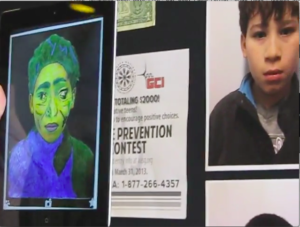 Cris often shares a great example video with her students to get them thinking about augmented reality possibilities within the curriculum. In the video, Dr. Jason Ohler demonstrates an augmented reality classroom project.
Cris often shares a great example video with her students to get them thinking about augmented reality possibilities within the curriculum. In the video, Dr. Jason Ohler demonstrates an augmented reality classroom project.
An elementary teacher created a silhouette of each of her 3rd-grade students. These became a trigger. The students used a copy of the silhouette to draw a self-portrait. Once completed, the teacher helped each student create a 15-20 second self-reflective video. Next, the students created a second drawing depicting what is going on inside their heads.
The teacher uploaded images in Aurasma, setting the silhouette as the trigger or base and the student-produced portrait, video and second drawing to appear as auras in 3D on top of the trigger. Parents download the Aurasma app then hold their smartphone or tablet open over the silhouette. Using augmented reality, the triggered content appeared on top of the silhouette showing the self-portrait, video and finally the second drawing.
Online Repositories for Triggers
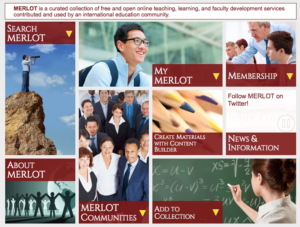 Using resources from repositories such as MERLOT enables instructors to use a plethora of objects as trigger bases or auras. Multimedia Education Resources for Online Teaching, MERLOT II, is in its second version has gone through a significant upgrade in 2013. Begun by Apple computers who worked with higher education institutions across the west coast of the United States to develop MERLOT, the latest version is now operated out of the Chancellor’s office at California State University in Long Beach. It has grown to nearly 20 extensive learning communities across all disciplines.
Using resources from repositories such as MERLOT enables instructors to use a plethora of objects as trigger bases or auras. Multimedia Education Resources for Online Teaching, MERLOT II, is in its second version has gone through a significant upgrade in 2013. Begun by Apple computers who worked with higher education institutions across the west coast of the United States to develop MERLOT, the latest version is now operated out of the Chancellor’s office at California State University in Long Beach. It has grown to nearly 20 extensive learning communities across all disciplines.
Augmented reality in education is quickly becoming a primary way for educators to step into the world of virtual, mixed and augmented reality. No headgear or high-end hardware is necessary and downloadable apps like Aurasma make creating lessons quick and easy.

